-
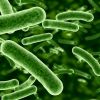 +3 +1
+3 +1Genes point to how some bacteria can gobble up electricity
Bacteria can have superpowers. Some flourish in almost any environment. Others can transform toxic materials into harmless sludge. A bacterium called Shewanella oneidensis can do both. But this microbe also has a much rarer superpower: It absorbs and produces electricity. In fact, new research suggests, these bacteria may be able to use energy collected from wind or solar sources to make fuels to run vehicles and more.
-
 +19 +1
+19 +1Kombucha was just the beginning. This designer wants to create a bacteria-based food industry
The experience of eating out with friends looks very different these days, if it happens at all, due to social distancing measures. Designer Marek Głogowski, a recent graduate of Design Academy Eindhoven, wants to change the actual food you eat too.
-
 +19 +1
+19 +1Bacteria from Earth can survive in space and could endure the trip to Mars
A type of bacteria that is highly resistant to radiation and other environmental hazards survived outside of the International Space Station for three years, according to a new study. The Japanese Tanpopo mission involved including pellets of dried Deinococcus bacteria within aluminum plates that were placed in exposure panels outside of the space station.
-
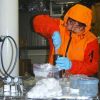 +3 +1
+3 +1Researchers revive bacteria from the era of the dinosaurs
Far from the life-sustaining light of the sun, the deep sea floor appears barren and desolate. Its appearance, however, belies a thriving bacterial ecosystem that may contain as much as 45% of the world’s biomass of microbes. This ecosystem is fuelled by what is known as marine snow—a steady shower of small, nutrient-rich particles that fall like manna from the ocean layers near the surface, where photosynthesis takes place.
-
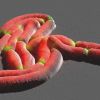 +5 +1
+5 +1Bacteria under the microscope: a new growth model for tuberculosis
For centuries, scientists have peered down the lens of a microscope and watched as bacteria – some circular, others rod-shaped – multiply before their eyes. Yet, much about the details of how cells grow and divide is still hidden, in part because the technology to resolve this process is lacking. A team of engineers, biologists, and physicists at EPFL have now used a combination of state-of-the-art microscopes to uncover new insights into the growth of mycobacteria, a family that includes the bacillus responsible for tuberculosis.
-
 +2 +1
+2 +1Nasa rover finds strange bacteria on test drive in Atacama Desert
These scattered and salt-resistant bacteria tell us what to look for when hunting for life in space. What should we be looking for when we’re looking for life on Mars? Given the harsh environment that includes radiation, extreme temperatures and drought, life might look quite different from what it looks like here on earth. Some spots on our planet come close to Mars-like conditions, though.
-
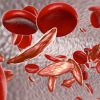 +14 +1
+14 +1Harmful genetic mutations may be less common than thought
New research suggests point mutations in bacteria arise at a relatively low, constant, rate and only 1% of these changes are lethal. Therefore, it is suggested that most mutations in bacteria may not have any effect on survival. This is perhaps surprising when we think of bacteria evolution, especially in the context of human health and antibiotic resistance. This research is summarised in a guest post below.
-
 +2 +1
+2 +1Scientists are trying to figure out which bacteria have colonized our space station
It’s a bit like a terrestrial house, but also a bit like a human body. By Sara Chodosh.
-
 +21 +1
+21 +1Quantum dots and antibiotics are a lethal combo for drug-resistant superbugs
Bacteria that are resistant to current antibiotics are a growing—and alarming—problem. A new solution comes from an unexpected place: light-activated chemicals that supercharge antibiotics so that bacteria cannot withstand them. Drug-resistant infections are a serious concern. Some strains of the bacteria Escherichia coli (more commonly known as E. coli), for example, have become resistant to drugs like carbapenem, usually considered antibiotics of last resort.
-
 +2 +1
+2 +1How Big Pharma’s Industrial Waste Is Fueling the Rise in Superbugs Worldwide
Pharmaceutical companies are fuelling the rise of superbugs by manufacturing drugs in factories that leak industrial waste, says a new report which calls on them to radically improve their supply chains. Factories in China and India – where the majority of the world’s antibiotics are produced – are releasing untreated waste fluid containing active ingredients into surrounding areas, highlights the report by a coalition of environmental and public health organisations.
-
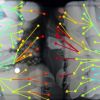 +31 +1
+31 +1Stunning Videos of Evolution in Action
The MEGA-plate allows scientists to watch bacteria adapting to antibiotics before their eyes.
-
 +17 +1
+17 +1The coffee-machine bacteriome: biodiversity and colonisation of the wasted coffee tray leach
Microbial communities are ubiquitous in both natural and artificial environments. However, microbial diversity is usually reduced under strong selection pressures, such as those present in habitats rich in recalcitrant or toxic compounds displaying antimicrobial properties.
-
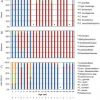 +14 +1
+14 +1We Want the Funk: The Ups and Downs of Wild Microbes in Beer
Funky, floral, complex. No, this is not a description of a piece of vintage wallpaper. These are some of the words that are used to describe the enormous variety that exists within the world of beer. Whether you are enjoying the outdoors on a sunny day or sitting by the fire on a cold, winter night, there is a beer to match every occasion.
Submit a link
Start a discussion




















